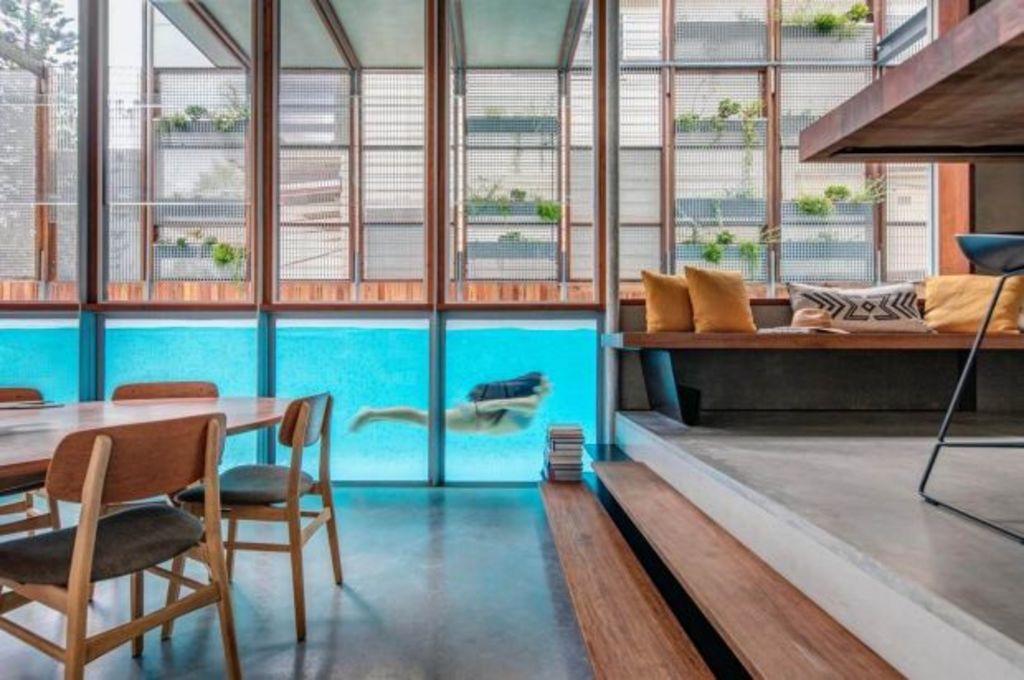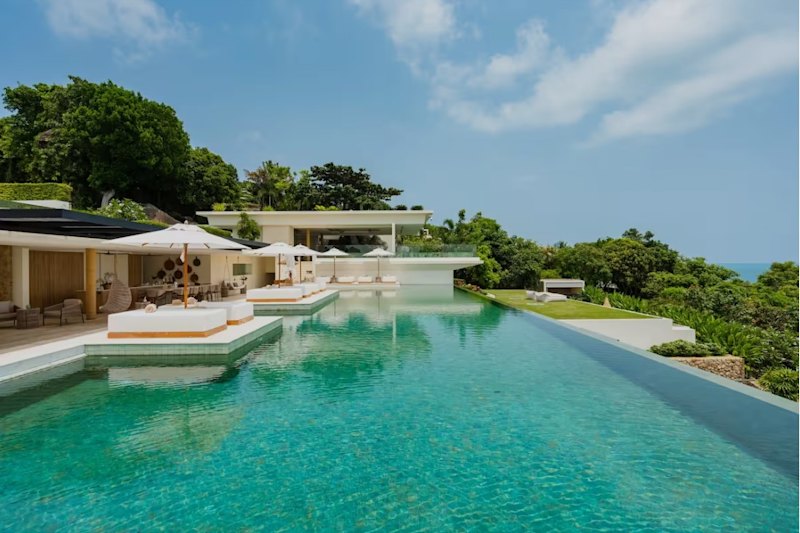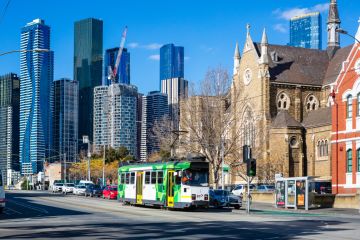Four Sydney homes shortlisted for World Architecture Festival awards

A North Bondi house with a glass pool slicing through its centre is among the Sydney homes leading the charge for world-class architecture. It’s one of four Sydney homes shortlisted for this year’s World Architecture Festival awards – the most of any city.
With another three homes in Melbourne, Perth and Bowen among the nominees, Australian properties make up seven of the 17 shortlisted houses.
“I think because of our climate here, we can be a lot more adventurous,” said Clinton Cole, the director of CplusC Architectural Workshop, the firm that designed and built the Living Screen House in North Bondi.
Apart from the lap pool running through middle of the property, another design feature of the four-bedroom house is the screening after which it is named.
“It was such a tight site … and around it was quite built up,” Mr Cole said. “Getting a good level of privacy and light was the biggest challenge.”
The screens encasing the home allow light to filter through, create privacy and will help introduce greenery to the home by supporting a vertical garden, which will spread across them in time.
Meanwhile, the heated pool – which also brightens the home by refracting sunlight – helps to moderate the temperature of the home.
Related: Australian architecture for beginners
Related: Architects who should be on your radar in 2017
For a competing Sydney project – the Cleveland Rooftop at the SJB-designed Cleveland & Co – its incorporation of greenery is what sets it apart.
A big drawcard of the Redfern apartment is its sky-level garden, which sits next to the block’s communal rooftop garden – also shortlisted in the award’s landscape category.
“Connection to the outdoors was a factor for a lot of the residential buildings and housing [shortlisted], they all have a really strong link to what we’d once call sustainable architecture, but is now just part of good living,” said SJB director Adam Haddow.
As Sydney increasingly turns to higher-density living, Mr Haddow said it was vital for projects to invest in outdoor spaces that helped people better connect to a place.
“Something like the rooftop garden allows everybody to get to have that same view. It creates a space for everyone, and helps create a better send of community.”
Mr Haddow believes the raft of shortlisted Sydney properties – which also appear in housing, commercial development and future project categories – are linked to the city’s construction boom and strict planning measures.
“Sydney has had a building boom, there’s been big investment by clients and by government, which results in more projects,” he said.
“[But] the planning controls in Sydney also force a certain type of quality outcome, the government has raised the bar which requires a level of excellence,” he said.
Architect Michael Waterman of MHN Design Union agreed, noting the City Of Sydney’s strong push to maintain heritage items had shaped the design of their heritage terraces a Surry Hills – a contender for the future project residential category.
The DA approved project, expected to break ground later this year at 249 Devonshire Street, will replace warehouse buildings at the site with a three-storey mixed use development with 19 apartments.
While the warehouses are not heritage listed, the push to incorporate them into the new development shaped the design of the building, which will also be built with recycled bricks from the site.
“That’s another common theme among the projects, this idea of re-using … or building on top of existing structures, to maintain history,” he said.
Again, in a bid to give residents that chance to connect with nature and each other, the development will have a rooftop garden, and an internal atrium to create a better sense of community.
Mr Waterman felt the volume of apartment stock in the Sydney market meant those looking to stand out had to think about more than just the style and size of the flat.
“It’s not just the size of the apartment or the view people are looking at any more, people are much more discerning of a building’s architecture,” he said.
“The price of buying a unit here is so high and there is a lot of stock out there, so developments really need a point of difference to secure a buyer.”
We recommend
We thought you might like
States
Capital Cities
Capital Cities - Rentals
Popular Areas
Allhomes
More







